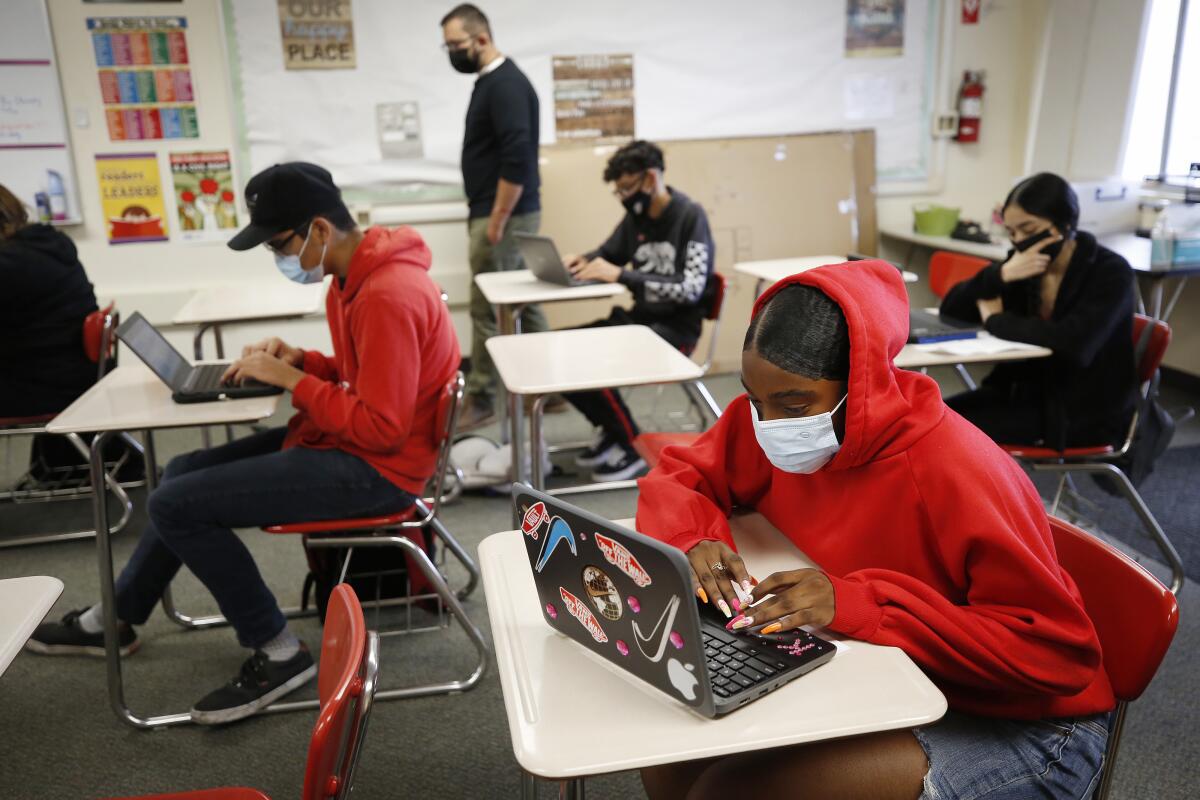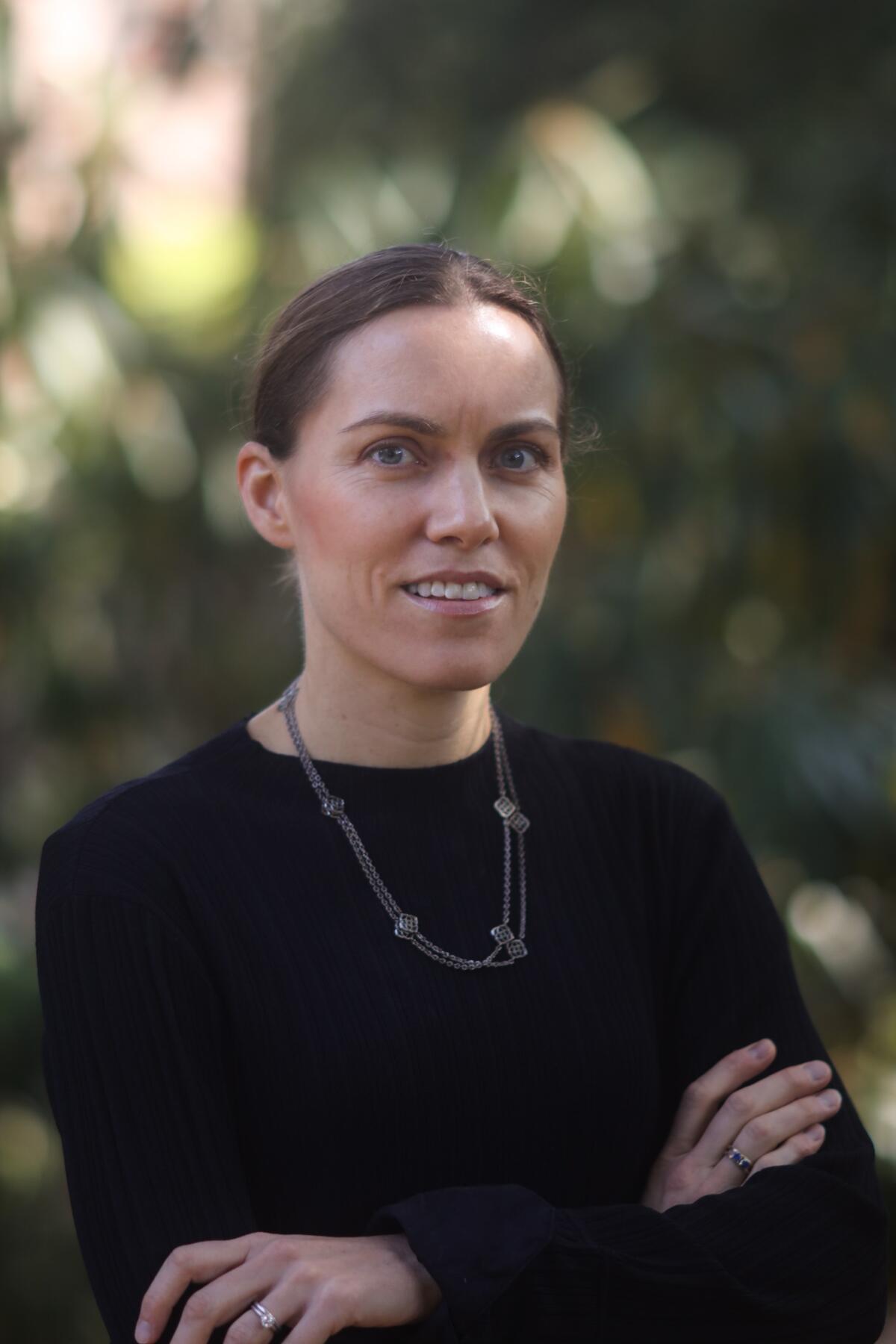An economist weighs in on your tough decisions for school-age kids: ‘You gotta look at the whole picture’

This is the Aug. 2 edition of the 8 to 3 newsletter about school, kids and parenting. Like what you’re reading? Sign up to get it in your inbox every Monday.
Decisions, decisions.
After 18 months with very few choices, we’re all suddenly being asked to decide what to do with our kids again.
For example: If your child is in the Los Angeles Unified School District, you’ve likely just made a final decision about whether they will attend exclusively online or in person in the fall — something the Delta variant may well have thrown into question.
Likewise, you may be weighing whether to hold your child back a year or ask that their grades from 2020-21 be converted to pass-fail, options made possible by California’s new law, Assembly Bill 104.
Or maybe, like me, your choices are more quotidian: Should we sign our kindergartner up for extracurriculars — and if so, which ones? Can we afford to lose our deposit if our choice gets shut down, or if we need to pull him out to protect vulnerable family?
Unfortunately, Brown economics professor Emily Oster couldn’t tell me whether soccer is safer than Russian School of Math, or if Suzuki violin is more enriching than musical theater. But her new book, “The Family Firm,” was written to help parents like me improve how we make those decisions — even in situations where the choices are limited or nonexistent.

Our conversation has been edited for length and clarity.
8-to-3: “Family Firm” is set up around how to make choices, especially as your kids get older. But it strikes me that we’ve all faced a year and a half now where our normal choices were taken away from us, particularly around our children. How do you adapt this approach if your choices are really constrained?
Emily Oster: I think decision-making under constraints makes it more necessary to think through choices. It’s true, there were tremendously many more constraints placed on people about “what do I do with my kids?” The standard things that we were doing were shut off, but it didn’t mean that there wasn’t a choice. There’s a way in which the limiting of choices makes it necessary to think about them more — it doesn’t turn off that necessity.
Now, we have an opportunity to reassess what we want things to look like, and maybe there’s a way to do that that gets you to something you like better.
8-to-3: One thing we’re seeing here is that parents are making a lot of different choices about education: whether to continue in remote school, start homeschooling, change schools or districts, etc.
EO: I think these conversations are being had somewhat more broadly, though my sense is that they are most extreme in California, because there’s more of a culture of doing things differently. Also, most of California [education] was virtual, much more so than any place else in the country. There’s not as much scope for reevaluating what you’re doing when your school was in person every day last year.
If my kid continues in remote schooling, what’s that going to mean in the long term? There’s a temptation for some reactionariness, because of the trauma and all the terrible experiences of the last year, but there’s [also] a moment to say, “I want to make this decision the right way going forward, not make it because I’m angry or because I want to punish the school in some way.” You may want to choose a different school, but it shouldn’t be out of anger.
8-to-3: If you’re partnered or coparenting, you also have to make these decisions in conjunction with someone else. But that’s not something most of us think about how to do before we have kids.
EO: It’s hard to have those conversations before you have kids. People tell you before you get married, you need to talk about whether you’ll have kids, where you’re going to live, but it doesn’t make sense to talk about “how many extracurriculars do I want our kids to do?” You can’t have every conversation up-front.
We had a careful conversation about whether we wanted to have kids, but we didn’t recognize that the experience of having kids is also something we want to be on the same page about.
[Instead] we are having those conversations in an unstructured way, and often in a way that has a lot of conflict. It’s easy to fall into that even with someone you really like, just because we never sit down to say, “Hey, this is how I think we should do this.” Because we’re tired and busy, and to be like, “OK, let’s have a meeting about this,” it’s like, “Are you kidding me?” I have so many meetings! But just one more meeting.
8 to 3: As a more seat-of-the-pants mom, I’ll admit I was a bit overwhelmed by all the calendars and spreadsheets and Google Forms you talk about in the book.
EO: It’s interesting to hear you talk about that. Some people are going to read this and say, “I’m not going to do all of these steps.” And that’s fine. It’s a little bit like a business book. You don’t do exactly what the book says. You don’t have to do every workbook page.
8 to 3: But conversely, I thought other parts were really enlightening and insightful. For example, I really liked your section on reading.
EO: That is my favorite section.
8 to 3: I loved what you wrote about the utility of audiobooks. When I’ve written about them in the past, I find a lot of people hold very negative, often ableist views about audio in relation to print. But your analysis shows that they actually complement each other.
EO: That part for me was very interesting, because my kids really loved audiobooks, but the reason I was using audiobooks was just so they didn’t vomit in the car. When I came to look into this for the book, [the research] was validating: This is a way for people to hear what it sounds like when someone reads smoothly, what it sounds like to read with expression, when someone reads with intonation — that’s something you don’t get when you’re sounding things out, but it is a valuable part of making those transitions in reading.
8 to 3: As a child of California public schools of the ’90s, I was also fascinated by your bit about Whole Language [the now-discredited literacy program that briefly replaced phonics in some California schools]. I can’t tell you how much I suffered trying to learn to read this way. It’s based on a very compelling idea — but it doesn’t work!
[8 to 3 note: I ultimately learned to read out of boredom after exhausting Kaiser San Francisco’s entire VHS collection of “The Twilight Zone” during a six-week stay on the pediatric ward.]
EO: The buildup of [evidence for] why phonics would be the right way to teach reading is very interesting. When you read, you perceive yourself reading whole words. So then, aha! If this is how I’m reading, then of course this is how we should teach reading.
But the recognition from neuroscience is that you are actually chunking long words when you’re reading. People perceive that they’re reading the whole word but they’re actually not. Putting those pieces together, I found it to be a very interesting place where the neuroscience part came together with the other ways we might research this question to point to this one conclusion that is important for how we teach reading.
8 to 3: It’s almost a metaphor for the whole book, where we think we make decisions one way, but we are actually making them — or should be making them — very differently.
EO: Yes. It’s putting a lot of pieces of information together to make the decision correctly. Any one piece of data is not quite enough, you gotta look at the whole picture.
Now, about that pandemic ...
— If you’re a parent of an L.A. Unified School District student, you’ll need to know this: Under a new policy announced Thursday, all LAUSD students and employees will be required to take weekly coronavirus tests regardless of their vaccination status. Here’s the full story from my colleague Howard Blume.
— Many parents, of course, are freaking out about the Delta variant and what it means for their kids and school, Hayley Smith and Deborah Netburn report.
Enjoying this newsletter?
Consider forwarding it to a friend, and support our journalism by becoming a subscriber.
Did you get this newsletter forwarded to you? Sign up here to get it in your inbox every week.
— You may recall the recent uproar surrounding the elite boarding school in Ojai, the Thacher School, which acknowledged a long and sordid history of sexual harassment and abuse. Last week, as The Times’ Brittny Mejia and Colleen Shalby report, the school took further action, stripping the name of its former head of school, Michael Mulligan, from the campus dining hall and athletic field.
Tales of the ‘delusionally ambitious’ and others. ...
— A nonprofit group has come up with a checklist to help parents assess the mental health of their kids in the pandemic. KNBC-TV Channel 4
— How do you turn around a struggling school? Lincoln High in San Diego is a case in point. San Diego Union-Tribune
— The parents of a student who was kicked out of an all-boys Catholic school in Sacramento have sued the school, saying their son was booted because he spoke out against critical race theory. The school says he also used racial slurs. Sacramento Bee
— A Los Gatos teenager who refers to herself as “delusionally ambitious” wrote and starred in a 20-minute film about the struggles of a Silicon Valley high school student with a learning disability not unlike her own. San Jose Mercury News
— San Francisco has a shortage of spots for after-school care, and that’s a crisis for some parents. San Francisco Chronicle
— Thanks to the pandemic, elementary school students in the United States are about four to five months behind in school, the consulting firm McKinsey and Co. says. New York Times
I want to hear from you.
Have feedback? Ideas? Questions? Story tips? Email me. And keep in touch on Twitter.
Sign up for Essential California
The most important California stories and recommendations in your inbox every morning.
You may occasionally receive promotional content from the Los Angeles Times.




